HR Building Block #3: 5 Employee Engagement Tips for Startups to Unlock Passion, Purpose & Productivity
Your employees may clock in for the paycheck, but what really motivates them to go the extra mile for your company day after day, year after year? Beyond the size of their annual package, the biggest propelling factor is probably employee engagement.
Employee engagement is the emotional investment and connection that imbues each individual with the passion and purpose to contribute meaningfully to a brand. Studies show that this has a wide-ranging impact on everyday behavior and business performance.
Highly engaged business units recorded a 41% decrease in absenteeism and a 17% increase in productivity, shows a Gallup employee engagement survey. Another Aberdeen report shows that companies with engaged employees see 233% greater customer loyalty and a 26% greater annual increase in revenue.
How can start-ups and small-medium enterprises (SMEs) harness their people-power? We speak to Siew Yuen Tuck, founder, and CEO of Jirnexu, and Joelle Pang, general manager of FastJobs Malaysia to unpack five key strategies for healthy scalability.
#1 Creating A Communication Strategy
Communication is the bedrock of employee engagement. And the first step to building a sound strategy is to decide on your communication goals.
Communication is the bedrock of employee engagement. And the first step to building a sound strategy is to decide on your communication goals. Do you want to share organizational changes, keep teams and staff abreast of key information they need to succeed, create a sense of unity and belonging, or all of the above? Your strategy should reflect your specific goals.
While communication should not be neglected in any scenario, it has been especially vital during the pandemic, when many employees work remotely and teams tend to be more siloed than before.
“We can all agree to an extent that there is a magic that is lost when people are not able to be physically together, generating ideas. Open and effective communications has become more important than ever in such a challenging landscape when everything is done digitally,” says Joelle, who has been managing her Malaysian team remotely from Singapore due to COVID-19 restrictions.
Her business continuity plan includes daily check-in meetings on different split-team levels and with team leaders, as well as fortnightly meetings with her direct reports. She further makes it a priority to set up a healthy cadence to enable information to be shared so that the different stakeholders are adequately updated and given the information they need in order to succeed.
Another key factor in effective communication is transparency. Indeed, it is hard to have engaged staff when they feel constantly left out of the information loop, and distrust management.
“The more transparent you are, the less time you have to spend trying to explain things. It is very clear why decisions are made, and people will be less surprised by what is going on,” shares Yuen Tuck, who organized town halls every one or two months pre-pandemic to share how the business performed, as well as key initiatives for all business units.
#2 Company-wide Alignment
A successful communications policy naturally supports alignment – the mutual understanding of shared objectives and expectations within the company.
“In terms of rapid growth, alignment of expectations is vital. There is a misconception that as a start-up, you don’t need structure – you grow from zero to one, and one to hundred, and just have fun and wing it. But that is simply not true,” stresses Joelle.
“In terms of rapid growth, alignment of expectations is vital. There is a misconception that as a start-up, you don’t need structure – you grow from zero to one, and one to hundred, and just have fun and wing it. But that is simply not true,” stresses Joelle.
Yuen Tuck agrees: “When I look back at the problems we’ve had in the past, it’s usually when expectations were not properly communicated and agreed on from the start. KPIs and goals should be clearly communicated, fair, and mutually agreed upon in writing. That’s the make-or-break. If you get that wrong, the whole process breaks down.”
#3 Tuning In To Employees
That said, communication is a two-way process. Employees who feel their voice is heard are 4.6 times more likely to feel empowered to deliver their best performance, suggests a Salesforce report.
When a company grows rapidly, employees may find it harder to get one-on-one face-time to voice concerns and raise issues and start to feel disconnected from the management. In such cases, it is even more important to ask for feedback and address issues promptly. Employee engagement surveys and even simple monthly Q&A sessions can help management stay connected to their employees’ concerns.
“At any one time, there are probably a lot of things annoying people which make them a little less happy, but not enough that they’d want to escalate it. We used to use Sli.do to conduct anonymous “ask anything” sessions during town hall meetings. This also allows staff to vote for the most popular questions. Sometimes, the strangest things float up to the top with the most votes, such as office administration issues that people are irritated by. This kind of anonymous “ask me” tool can be quite helpful to keep a finger on the pulse on what’s bothering employees,” says Yuen Tuck.
“This kind of anonymous “ask me” tool can be quite helpful to keep a finger on the pulse on what’s bothering employees,” says Yuen Tuck.
In addition, pre-COVID, Jirnexu also conducted team sessions every quarter for employees to raise any questions. Yuen Tuck goes through all exit interviews as well to tune in to staff experience and addresses pertinent issues.
#4 Strengthening Culture And Sense Of Belonging
Naturally, your company’s core values should be the cornerstone of your employee engagement strategy. In fact, 80% of employees felt more engaged when their work was consistent with the core values and mission of their organization, suggests an IBM Smarter Workforce Institute Thought Leadership Whitepaper, “The Employee Experience Index”.
“At the end of the day, having a mission, vision and values give you and your team a framework to make decisions,” says Joelle. “I manage our team based on our corporate values, “FAST”, which stands for “Focusing on people”, “Allowing people to take accountability”, “Strength in unity” and “Trust, which is built over time”.
“One strategy I have been putting in place during the pandemic is placing trust first. I trust my teammates to show accountability and deliver results, and even give junior teammates leadership positions so that they may grow. In fact, we have identified a lot of high potential colleagues, and this crisis, has highlighted a lot of their key strengths,” she adds.
#5 Building Relationships
The last crucial piece of engagement is making employees feel like they matter. As many as 93% of employees say they are more likely to stay with an empathetic employer, according to a Businessolver study.
As one of the few female leaders in technology, Joelle has made empathy and mentorship central in FastJobs’s culture, setting aside time to coach both high and poor-performing staff, understand their aspirations, strengths, and weaknesses, and empower them to achieve their personal best.
To foster team bonding, FastJobs also appointed two social committee chairpersons. To celebrate Christmas together during the pandemic, they couriered a “Box of Love” to team members so that they could make and enjoy Dalgona coffee, hotpot, and dessert together virtually.
“Though these micro-moments may not seem like much and won’t bring in extra revenue, they go a long way towards creating a sense of togetherness and commitment towards the team and company,” she shares.
This, along with the other employee engagement strategies here, will unlock company-wide synergy, and transform even average teams to high-performing A-teams.
Check out the rest of our 5-part series as follows
Overview: HR Building Blocks for Series-A Startups
HR Building Block #1: Hiring and On-Boarding Large Numbers Quickly
HR Building Block #2: Building Culture and Value as You Scale
HR Building Block #3: Engagement & Communications
HR Building Block #4: Optimizing Performance

